Ian Bull's Blog
September 26, 2014
CALIFORNIABULL.COM
CHECK OUT OLDER BLOG POSTINGS HERE ON BLOGSPOT.COM.
NEW POSTINGS, HOWEVER, CAN BE FOUND ON MY WEBSITE
IANBULLAUTHOR.COM
CALIFORNIABULL.COM
THANKS!
NEW POSTINGS, HOWEVER, CAN BE FOUND ON MY WEBSITE
IANBULLAUTHOR.COM
CALIFORNIABULL.COM
THANKS!
Published on September 26, 2014 13:21
August 15, 2014
The Anonymous Art
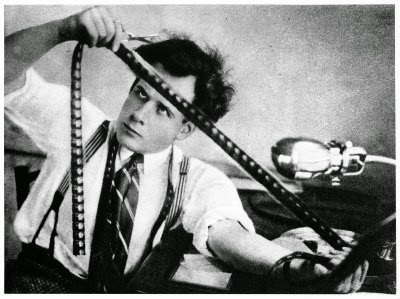
I have advice for any young person starting out in film, TV or video production. Find a craft that you love and get good at it, so you always have a job. For me, that craft is editing. I am thankful for my choice. I learned the craft of film and TV editing early in my career, and it has always been a joy for me, and a steady way for me to make a living. My first job was as a production assistant in the Current Affairs and News Department at KQED in San Francisco, and one day I was driving Mr. Ken Ellis, the News Director, to a shoot. I knew I wouldn’t get that many chances to be alone with him, so I was bold enough to strike up a conversation. “Ken, any advice for someone like me, just starting out?” “Learn how to edit. That way you’ll always have a job.” He was right. I took his advice to heart and I learned the Anonymous Art. Editing is hard to define, but here’s my definition: good editing is taking images and sounds, music and effects, eliminating most of it, and combining your best choices into a story so compelling that it pulls the viewer in completely, and they experience the story as a whole, unaware of how it has been put together. That’s why it’s anonymous. My goal is to do my job so well that I disappear. The wrong edit, a musical stumble, or an unnecessary flourish will just remind everyone that there is someone behind the curtain manning the controls. What makes it an art is nebulous. When a story works, it’s not always obvious why, since the work itself is hidden within the storytelling. Likewise, when a story almost works yet is not quite satisfying, it also hard to pinpoint what has gone wrong. There are dozens of ways to order and re-order the same material, and two editors often have different ideas of what’s “best” in the footage they are given. This means two editors will always edit the same material in a different way. But when the results shine, it’s clear that something almost magical has happened. That’s what can elevate this anonymous process from a craft to an art. There are some trade-offs that go with it, of course. But every disadvantage is an advantage, if you look at it from another angle (like different shots in an edit bay).

The editing process is solitary and laborious...unless you like being alone. I have the soul of a writer and editor, so I’m fine with being by myself for long stretches. It takes years to learn how to do it well...which means you can’t fake it, either. That gives you job security. The director, producer and even the actor take credit for your work...but they create the editing jobs. A TV show generally has one producer and one director per episode. Go down a few tiers, however, and that’s where you find plenty of work for editors. You also learn how to be a better director and producer by starting as an editor, since you see what works and what doesn’t, and you end up fixing it or making it shine. Editing is also a refuge. I have been a writer, director and producer, and all three jobs can be frustrating and exhausting. You work long hours, often far from home, and your day is never done. There is always some other phone call or tweak you can make. These jobs can also suddenly end, and you may then go for months without another directing or producing gig. Most of all, I am thankful for editing. Years ago, it taught me how to direct and produce, and gave me steady enough work that I could create side projects of my own. Now I am in a new phase of my career, and I am stepping back from producing and directing and work on the road, and I want to spend more time writing books and more time with my family. Thus, I am back in the edit bay. And I am also thankful for all those people who hired me, and who continue to hire me, because they accepted me for who I am. Almost every producer and director who hired me not only tolerated my side projects, they also encouraged me. They also allowed me to live a normal life, with the ebb and flow of family, illness, life, death, happiness and tragedy, which I bring back to the edit bay as life experience. All they want from me in exchange is to edit the best show I can, and deliver it to them on time. For their patience, indulgence and collaboration I am truly grateful. And the fact that they keep calling. Now, I have to get back to my edit.
Published on August 15, 2014 10:55
August 7, 2014
Worries on a Summer Day
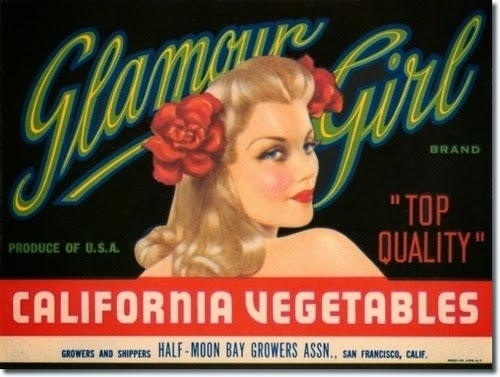
I’m having a wonderful summer. For the first time in six years, I have a regular work and life schedule while my daughter Lily is out of school. For the past five summers I’ve always been on some insane TV project that kept me busy 60 to 80 hours a week, which always turned my summers into a blur of early mornings and late nights, with blazing hot car rides and late hours in edit bays. I’d hear the building air-conditioning turn off at 8 p.m. and work until the room got too hot to bear. I swim in the morning in the public pool. I then come home and I make Lily and Robin breakfast. We eat outside in the backyard. We cut red yellow and purple flowers that we know the sun will burn, so we might as well bring them inside and put them in vases on the dining room table. We pick limes off our tree and set them aside to ripen for lime-aide. We feed the neighbors’ pets while they are away and pick ripe figs and grapefruit off their trees. I dress and drift into work just after the light morning rush, work eight hours, and then come home, and we drift into a evening of cooking, eating, laughing, playing in the front yard, cards games and bed. It has been idyllic, and it reminds me to slow down and lead a more simple life. And I have time to read. And to think. And to ponder. And to worry. I wonder if this idyll will end, and how it will end, which makes me cherish this California life while I can. As I write this, Russia is poised to invade Ukraine. Hamas and Israel have stopped fighting and both claimed victory in Gaza, which is in shambles. ISIS is taking over in Syria and Iraq, setting up a brutal caliphate, and jihadists are doing the same in Benghazi, Libya. West Africa has an Ebola outbreak that may have touched 30,000 people. Boko Haram has taken over the northeastern portion of Nigeria. In South America, Argentina is in default on its loans. Honduras has the highest murder rate in the world.


Mexican drug cartels control much of Mexico, and although there isn’t as much open warfare in the streets, there is still kidnapping and murder in every city and 25,000 people have gone “missing” in the last five years. Those are just the political conflicts that come to mind as I write this and circle the globe in my mind. Then we reach California again, and my current bliss, with an underlying awareness of our current fragility. We are in the midst of a five year long drought that may be a 50 or 500 year drought, which the American West has gone through in the past, before global climate change exaggerated every weather pattern.

And how many of our global political conflicts are actually expressions of that global climate change? Most North African and Mid-East countries are suffering from drought, poor crop yields, and hunger, with large populations of people under 30 who are underemployed. This is definitely the case in Egypt, which has now drifted back to military rule. It’s the hot brutal summer after the Arab Spring. China is polluted and the Russian permafrost is melting, creating huge sink holes. Every conflict is a conflict over resources and who should get to control them -- and humans justify their warfare by blaming “the other” and invoking their version of God. A friend recently posed a question on Social Media -- has World War 3 officially begun? Maybe it has, and we just need historians to give us an actual “spark” date, like the assassination of Archduke Ferdinand in Sarajevo, which sparked World War 1 a century ago.

A hundred years ago, California was blithely ignorant of the crises going on in the rest of the world. In 1915, San Francisco hosted the 1915 World Fair, or the Panama Pacific International Exhibition, to celebrate the opening of the Panama Canal, and to also celebrate the rebuilding and rebirth of San Francisco after the 1906 earthquake and fire. While we in the West strolled the International Pavilions and boated in the lagoon that surrounded the Palace of Fine Arts, World War trench warfare had already begun. I feel we may be repeating ourselves. California is slowly recovering from the economic downturn. We are out of the red. Investors are buying our bonds again. We feel we are on a rise. I am enjoying the idyll, and I hope that it continues. I hope that winter comes and brings a normal El Nino weather pattern that fills our reservoirs but doesn’t flood us. Like Goldilocks, I hope it’s “just right.” At the same time, I worry that this idyll will end harshly, and there is hard work ahead for all of us. What form it will take, I do not know, and I do not know how to prepare for it, except to rest, live a simple life and be ready when it happens.
Published on August 07, 2014 23:14
August 2, 2014
Summer Memories
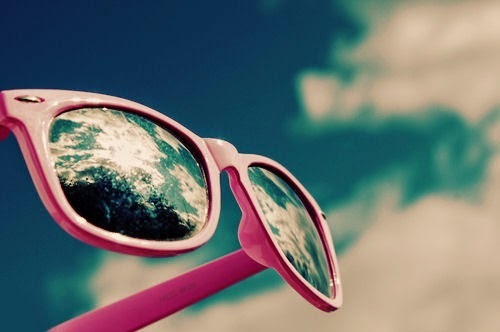
Summer creates moments in which time stands still. The moments become time capsules buried deep within your brain, waiting for the perfect trigger, and then, with the right summer sight, sound, or smell, your unconscious will unearth an old capsule for you, and send you back in time. Here are some of the summer triggers that unearth my time capsules.The smell of cedar -- I’m at Boy Scout camp near the Russian River, lying on a picnic table staring up through the branches of a gigantic coastal redwood tree, over 100 feet high. The hot sun is directly overhead but the tree’s branches are so thick, the hot bright sunlight filters to a dappled warmth by the time it reaches me. A breeze moves the branches sending the grey shadows dancing. I’m supposed to be somewhere, but I don’t care.

The sound of day crickets -- I’m in the hot hills near Geyserville, CA, walking through tall yellow grass between ancient California oak trees. The insects are so loud they sound like a high-pitched pulsing electric hum. A friend and I are hunting for Obsidian, the jet-black rock that reflects like glass. It’s everywhere around here, mostly in chips and flakes, until we come to a bare patch and I find a piece of obsidian the size of a cantaloupe. When I pick it up, one side is so sharp it slices open my right palm like a surgical blade. I’m bleeding and I’m a long way from the cabin where my family is staying.
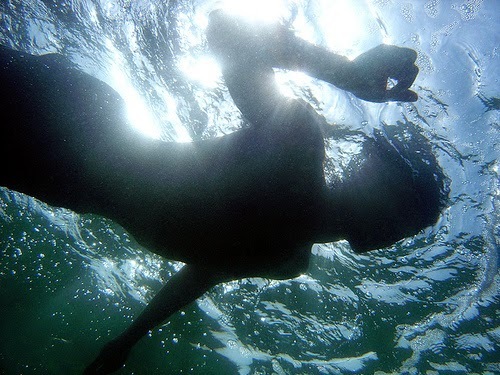
The strong smell of chlorine -- I’m shivering with a dozen other day campers as we wait in line for the automatic showers at indoor Larsen Pool. Someone hits the button on the floor and jets of cold water hit us from the side and from above. We’re then herded onto the pool deck for our lesson, which we all dread. Outside it is foggy and grey, so why is summer the time when we must learn how to swim? The smell of new chlorine is so strong a cloud of it seems to hang inside the vast cement and glass structure, stinging our nostrils. The lifeguard blows the whistle and we all jump in.
The feeling of salt water drying on my skin -- I’m on the island of Molokai, standing on a long quarter cement dock waiting for a ferry to take me back to the island of Maui. The Pacific Ocean is a vast blue plate that stretches in front of me, and it seems to curve at the edges. I dive off the dock, climb the metal ladder and dive in again. The ferry never comes, so I sit down and let the sun and hot breeze dry me off, and the salt itches my skin. I’m happy, but I wonder where I’m going to spend the night.

The taste of a root beer float -- I’m with my father in a station wagon, parked at an A&W Root beer and Hamburger Stand on a road deep in the backwoods of Ontario Canada. He loves the Mama Burger and I love the Teen Burger. He tells me that he’s been coming to A&W since he was my age, and he still loves it. He offers to buy me my first root beer float, and I fall in love with the taste. Root beer floats make me happy and make me miss my father.
The smell of menthol cigarettes -- I am in a crowd at Civic Center in San Francisco, watching the Ramones power through yet another free concert. They’ve given two so far in the Bay Area this summer. They announce they are America’s best band, and I believe them. Some young Filipino punks in front of me pass around packs of menthol cigarettes and light them up as the band rips into another three-minute three-chord power pop punk song.

The sound of a water balloon breaking -- It’s carnival day at summer day camp, and there are booths and games in the church basement. When you win a ticket you can either trade it for a toy, or get a kiss from a counselor. What? A kiss from a counselor? That’s something that would never be allowed nowadays, but no one objected then. Counselor Joanie is beautiful, and at her booth you must take a Bic razor and remove shaving cream from the outside of a water balloon without breaking it. I break many water balloons -- splosh, splosh, splosh -- before I finally get good at it. Once I do, I shave a half dozen balloons and make out with Joanie, age 16, who doesn’t seem to mind kissing someone six years younger than her.
The smell of burning metal -- I am driving my father’s Peugeot to Lake Tahoe with Paul Marshall to work a summer job for the weekend. We’re having a blast...until the engine overheats near Auburn. The radiator blows and loses all its water in an instant, and the hot smell of burning metal fills the car as the engine block warps. A highway patrol car pushes us to a gas station where we must pay the man to let us park it there, and we spend the rest of the weekend hitch-hiking back to San Francisco, renting a truck with a trailer hitch, driving back up to Auburn and then towing the Peugeot back to San Mateo. The entire time I know that the car is ruined and I must find a way to tell my father.
The smell of rotting seaweed -- I am on the beach in San Diego, producing a TV show about the Paskowitz Surf Camp and Surfer’s Healing. There are piles of rotting gooey seaweed on the beach and thousands of sand flies rise up as you step across them and encircle you in a cloud. But the day is perfect, nothing goes wrong, and five hundred people are happy running on the beach and playing in the water. I stand shoulder and shoulder with my colleague Susan and we drape our arms around each other’s shoulders and watch the late afternoon sun turn the ocean the color of bright silver. We compliment each other and say that we won’t forget this moment -- and I don’t.
These sights, sounds and smells are stronger in the summer, which makes the memories more vivid, allowing me to live in parallel summers simultaneously. That’s what I love about the season! What triggers your time capsules? More next week!
Published on August 02, 2014 07:54
July 25, 2014
In Ice We Trust

I have a fondness for twenty-pound bags of ice. They remind me of the different stages in my professional life. I’ve been a TV editor, writer, director, producer, and I’ve worked on TV shows around the country and the world. Ice has been a constant that revisits me on each and every TV endeavor, both the far-flung and the shows closer to home. A TV show needs ice, and for whatever reason, I become the Iceman. I began my career scared of the ice, then I became proud of the ice, then I resented the ice, and finally I embraced the ice. I found love and affection with the ice, and the ice helped me learn the producing game. The ice then humbled me. Now I have a deep fondness for my frozen friend as I remember all the changes we went through together.
I remember my first day as a production assistant, working on a TV comedy show in San Francisco. We were shooting skits with Duck’s Breath Mystery Theater in the backyard of a Victorian in the Haight-Ashbury district and my job was to do whatever I was told. Someone started a leaf blower within a half-acre of where we were shooting, stuck in a small yard between the tall homes. The director turned to me, handed me a twenty-dollar bill and said, “Find that person and make them stop.” I crawled over fences and climbed up back staircases while people screamed at me, but I found the gardener, gave him the money and made him stop for 30 minutes. I earned praise. After a long morning we went to the van for our snack break, but when everyone reached into the ice chest they discovered the drinks were warm. I’d packed the craft service, but I hadn’t gotten ice to keep it cold.
“You blew it,” the director said, immediately forgetting my heroics with the leaf-blower gardener. Thus my relationship with ice began.

As a lowly production assistant, the ice was the melting measure of my lack of experience. I had to copy log sheets, take notes, run errands, pack batteries, load the van, maintain the petty cash, buy lunch, arrange parking...while always maintaining a perfect amount of melting ice in the ice chest. It was a spinning plate that I had to keep in the air while all the other tasks had to be accomplished. I couldn’t buy it too early, or it would all melt. If I bought it too late, it stayed in a frozen block that took up too much of the ice chest, leaving too little space for the drinks and fruit. On a hot day I had to plan ahead so I could dump the water and restock the ice chest with new ice. If I waited too long the grocery store might run out, or they might overcharge me, or I might need to drive too far to get it. The ice was always a looming errand that I often got wrong, which created a cascade effect of other mistakes. I ran out of petty cash, I got parking tickets, I got the inside of the van wet, I disappeared for too long -- all because I blew it on the ice run. That’s when the ice scared me. Then I got good at it. Like a chef who can monitor several simmering pots on the stove, it became second nature to me. I got all my work done, and then even got the time to contribute creatively -- and when the crew opened the chests, there was always the perfect amount of half melted ice keeping everything cold. I was no longer scared of the ice. I felt capable and proud. As I moved up the ladder to other jobs -- directing, day producing, story editing -- I felt important enough that I had graduated away from ice. Yet I would still sometimes be asked to make the ice run! “Hey, we need ice. Do you mind going?”
I hated hearing that! Why me? Can’t that production assistant over there do it, like I once did? Why must I do their job? A year before, the ice had made me feel like a master chef. Now the ice was making me feel insignificant and under-appreciated. Nailing the ice run is like the perfect edit; it goes unnoticed, but it’s a detail that adds to the perfection of the project. But getting it just right so that it goes unnoticed means that you don’t get noticed either. That’s when I started to resent the ice.
Then ice changed for me again. The ice run became an icebreaker, and it helped me meet girls. I remember being on the road on bigger shows, and sometimes I had to stow the ice chest in my hotel room, or in the trunk of my rental car. I’d meet a young woman with her ice chest at the ice machine at the end of the hallway, and we’d load hotel ice into our respective ice chests, and chat and flirt. Later in the day, I’d volunteer to go on the ice run with her. It was a chance to sneak away from set and ride in a car with her, shop for ice, and share a bag of chips and some gum on the way back. We helped each other lift, carry, break, tip, and dump the ice, just the two of us. Then back at the production office at the end of the day, we’d go out into the parking lot and help each other dump out the cold water and clean the ice chests for the next day, and our flirting would advance to other things. I loved the ice then. Ice was my wingman.
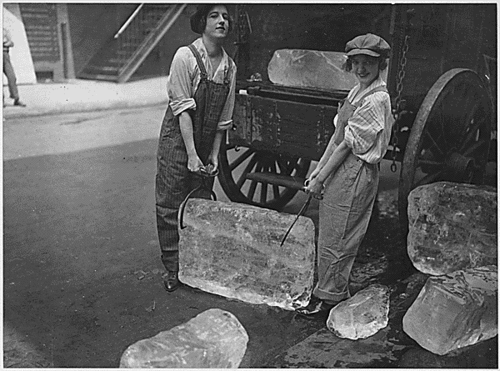
Ice changed for me again when I became a producer and spent less time in the field. Ice became a line item, a cost to track, and a way to monitor what was going on in the field. If three TV crews are going out five days a week, and each crew has an ice chest, that’s 15 big bags of ice a week. In the hot summer it can go up to 20. A cheap 20-pound bag costs $5.00 to $10.00, depending on the store and the supply. That’s around $100 a week in ice, usually more. A show that runs fifteen weeks costs $1500 to $2000 in ice, but it can easily climb to $3000 or more. When the ice bill starts to climb, it’s a good indicator that bigger problems may be going on. Are the production assistants buying small $10 bags of ice at 7/11? Maybe they’re not planning ahead and they’re rushing at the last minute and just buying the expensive stuff? Are they overworked? Are they buying bags and then wasting it? At the end of the production, a $5000 ice bill is way too high. That’s more than a week of editing on a show. Ice teaches you what’s going on.
I also produced and directed my own short films and sizzle reels, hoping to achieve creative and financial success on my own terms. That meant spending my own money, directing and producing my patient and underpaid crew, so it made sense for me to make the ice run first thing in the morning while buying coffee for everybody. And there I was, back buying ice in the grocery store and then taking it out into the parking lot and arranging the ice chest in the pre-dawn light. I had come full circle.
It had been so long since I’d been the Iceman, however, that I made tyro mistakes; I dumped the ice into the chest before lifting it back into the car. That’s a beginner p.a. move. You put the chest in the car first, and then dump in the ice and arrange the craft service; otherwise, you create a forty-plus pound weight you must then lift off the ground. Granted, my mind was occupied with deeper thoughts, but it was strange to flash back to the younger me, in a cold parking decades earlier, making the same mistake. Here’s another trick that that I’d forgotten -- if you drop the bag of ice from the perfect height onto the pavement, it breaks the ice into perfect pourable pieces without breaking the bag. Then you can open one corner and pour it in the ice chest. Drop it from too high and the bag breaks. If you don’t do the “bag drop,” you end up freezing your fingers as you try to break up the ice with your hands. That’s when ice humbled me.
Now I am fond of ice. I spend most of my time indoors writing and editing at computer consoles, but when the crews return from the field and their ice chests line the hallways, I feel nostalgic...but only a little. I’d rather be home on time for dinner these days. And when I look out the window into the vast hot grey parking lot and see two young people flirting and laughing while they dump out the day’s cold water onto a thirsty palm tree, I remember when every shoot was still an adventure. Maybe it will be again, and ice will take me there. After all, I’ve handled the ice with the best of them, in the Mojave Desert, in Germany, England, Maine, Florida, Hawaii, on the beach, and in the mountains.
I’ll be 90, directing some documentary on my own, and I’ll tow my little ice chest from my hotel room and load it with those excellent round cubes from the hotel ice machine at six in the morning, ready to meet my crew and shoot all day. I am the Iceman.

Published on July 25, 2014 15:01
July 19, 2014
Los Angeles vs. San Francisco---Weather Edition

People like to compare San Francisco to Los Angeles -- the people, the culture, the freeways, and the food. Here’s the breakdown when it comes to weather, month by month. I like January better in Los Angeles, by far. While it’s raining and dreary in San Francisco, the So Cal skies are blue, the air is clean, and it’s the best time to hike and be outside. It rained on the January 1st Pasadena Rose Bowl Parade only twice in sixty years -- once in 1955 and in 2006.

I like February and March better in San Francisco. While it’s raining in both places, in Los Angeles it’s flooding. People wonder why there are so many corner street dips and steep curbs on Los Angeles streets and boulevards; it’s because these roadways are designed to flood. When you live in a flat sea of cement you must channel the water somehow. Although I don’t like the flooding, I am crossing my fingers that this coming winter there will be a deluge nonetheless. We need the water. There’s a budding El Nino ocean current pattern looming in South America, and the State and city governments are banking on it -- that’s why there hasn’t been rigid water rationing yet and lawns are still green in Southern California. Everyone is hoping that this is just a five-year drought and not a 50 or 500-year drought, like the West has had in the past. I also hope that if there’s tremendous rain this winter that some of it stays in the mountains as snow and not all of it flows down into the storm drains and into the Santa Monica Bay. I like April and May equally in both cities. It’s cool and blustery in San Francisco, with a crisp breeze and clouds that keep moving. It’s even warm sometimes. You need a jacket, but it’s springtime and you feel alive. In Los Angeles the rain has stopped, but it’s not too hot yet. The flowers are out, and you can even go to the beach. It’s not warm enough to swim, but you can surf in a wetsuit. Just stay clear of the polluted runoff.
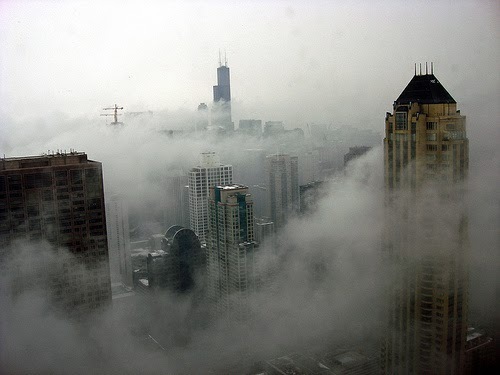
June is a split between the two cities -- for the first half of June, it’s great in San Francisco, but then the fog comes. The Central Valley is heating up, and as the hot air rises, new air must move in to replace it, and that new air comes rushing in through the Golden Gate, the one opening on the coast where the air can flow unimpeded. The ocean water in the south flowing Colombia current is still cold, and therefore so is the damp air above it. When that air gets drawn in through the Golden Gate, it hits slightly warmer and drier land and instantly condenses into wet fast moving fog.

The same thing happens in Los Angeles, but the air and the water are warmer and the air moves slower. Instead of fast moving cold fog, it’s the warm and slow moving “marine layer,” or “June gloom.” It never feels gloomy to me in Los Angeles, though. It’s cozy and warm and sheltering compared to the weather in San Francisco. I feel nostalgic, but not damp. July is better in Los Angeles because the June gloom is gone and the hot weather is here. It’s July 4th parades, pools, barbecues, baking in the sun, and driving around with the windows down listening to the game on the car radio. Independence Day fireworks in San Francisco are a bust half the time, with the shells just lighting up the fog clouds in different shades of yellow, orange and red. I also remember too many times hovering over a back patio grill shivering in a down parka while trying to light briquettes.
 June gloom in Los Angeles is now continuing into July, however, which is scaring me. That means that although the coastal ocean temperatures are rising, the interior valleys are hot and getting hotter, and moist air is still getting sucked ashore. Eventually the two temperature zones will even out more, which means August, may be blistering. In which city is August better? That’s a toss-up. While it’s becoming brutally hot in Los Angeles, the fog in San Francisco is still damp, fast and cold. In the City, there are times during the day when the fog lets up and the sun shines bright, and August mornings in L.A. are pristine. But you don’t want to be walking the streets in Los Angeles between 11 and 4 in August. You’ll fry.
June gloom in Los Angeles is now continuing into July, however, which is scaring me. That means that although the coastal ocean temperatures are rising, the interior valleys are hot and getting hotter, and moist air is still getting sucked ashore. Eventually the two temperature zones will even out more, which means August, may be blistering. In which city is August better? That’s a toss-up. While it’s becoming brutally hot in Los Angeles, the fog in San Francisco is still damp, fast and cold. In the City, there are times during the day when the fog lets up and the sun shines bright, and August mornings in L.A. are pristine. But you don’t want to be walking the streets in Los Angeles between 11 and 4 in August. You’ll fry. 
However, you can sit outside until 11 p.m. without a jacket and you won’t get eaten by bugs. Meanwhile, no one’s socializing outside on the patio deck in San Francisco after the evening fog rolls in, not unless they’re wearing a parka. September is better in San Francisco, unless you’re a kid going back to school. While it’s often 110 in Los Angeles in the week after Labor Day, in San Francisco, it’s pleasant Indian summer. It’s 80 degrees and the weather is perfect. There’s no wind, because the interior valleys have cooled off and there’s no air being sucked east, but the coast is still warm and toasty. Everything is even, west to east. If you’re a kid who’s been in the fog all summer, though, it’s tough to go back to school in San Francisco during the hottest weather of the year. You feel gypped.

October is better in Los Angeles. It’s still warm, and you can trick-or-treat on Halloween night in a flimsy costume, while in San Francisco the kids are resenting their parents who insist they need a sweater over that Superman suit. November is better in Los Angeles. The autumn is cool but not cold, and you can take a walk or a hike on Thanksgiving Day. December is better in San Francisco. It’s cold enough that it feels like Christmas, while in Los Angeles it can be 80 degrees in the sun and 40 degrees in the shade, making you feel schizophrenic as you walk down the street. The mild discomfort the weather creates in both cities is compounded by a simple problem that both cities share -- poor building insulation. In San Francisco you’re cranking up the heat, and in Los Angeles you’re cranking up the air-conditioning, and both the heat and the cold exit through the flimsy walls. But there are only a few tough months to get through, so we tend to forget until the energy bill comes after those bad months. That’s why the builders here have never laid it on thick, like you must in the Midwest. But as the bills rise higher, that may change. That’s because (despite my grading system) the weather seems to be changing in both places. April and May in San Francisco feel warmer and less windy -- more like Los Angeles did a few decades back. It feels great, but it also makes me wonder if something has changed. The 110 degree Septembers in Southern California are becoming as frequent as in Arizona, with the Cal Fire trucks zooming into the flaming hills as the hot Santa Ana winds howl down from the high desert, fanning the flames. That’s when we make national news.

Here in Los Angeles I am enjoying July, I am hopeful about August, but I am worried about September. I hope we make it through October, without burning, and I pray that the El Nino comes and early and rains on the Rose Bowl Parade, and it keeps raining, flooding the streets but dumping snow in the mountains and re-filling our empty reservoirs. And I hope I’m wrong about the weather changing. In the meantime I’ll conserve water and drive with the windows down, and try not to think about it too much. We’ll see how long that lasts.
Published on July 19, 2014 04:12
July 11, 2014
Kid Horror

Growing up in San Francisco, the Zodiac Killer was our boogeyman. In the late 1960s and into the 1970s, he was one of America’s first famous serial killers, who claimed to have murdered thirty-seven people (although only seven have been confirmed) and would send taunting letters to different newspapers in the Bay Area, gleefully claiming credit for the killings. His motivation? He loved to kill and he loved to make the police look like fools. His identity is still a mystery. Although I was too young to know about him when the murders were taking place, stories about him lasted for decades, and his name became a worry, a fear, a threat, and a taunt in my circle of friends. Most of all, he became a story. A horror story. Our horror story. Creating horror stories is a way to manage our fear in a dangerous and scary world. That’s how children learn to deal with the horrible knowledge that nihilistic angry men will randomly kill and torture people for pleasure. Boogeyman stories also teach personal safety through fear. My cousin Darren and I snuck out of the house one summer night, and when my father caught us, he warned that we couldn’t wander San Francisco after midnight, not with the Zodiac around. You want to dodge the Zodiac? Don’t wander down streets you don’t know, stick to the main avenues. Don’t talk to strangers, and don’t give people your name. When you see suspicious people on the street ahead of you, cross the street and keep an eye on them. Don’t write your name and address on your bicycle, or your backpack, or your bus pass. The Zodiac picks people to kill in random ways, and if he sees a kid lock up a bike, if he can get the kid’s name and address off of it, he’ll follow you home and kill you. It was an easy next step to start inventing stories of our own. There was the kid who left his backpack open at the park and the Zodiac killer went through it, found identification and then followed him home and killed his whole family but left him alive. A kid on a bicycle ran a stop sign and pissed off the Zodiac, who followed him home and killed him and wrote a message with his blood on the walls. A kid wrote his name on the back of a Muni bus seat, and the Zodiac was on the bus too, saw him, and killed him because he hated vandals. We even wrote our own threatening letters to each other, pretending to be the Zodiac, and left them on each other’s doorsteps. When I received a letter from “the Zodiac,” written in code with pentagrams drawn all over it, I always knew who wrote it -- it was whichever neighbor kid with whom I’d been trading Zodiac theories the day before. Our parents disapproved, but it occupied a lot of one summer...and hey, at least I was writing. My daughter Lily is going through her horror stage now. She wants to know terrible things that happened to me or other kids while I was growing up. I’m also warning her about the terrible things that can happen to her, and inventing boogeymen, and now she and her friend are creating their own horror stories to manage their fear, just like I did...but her stories have a 21st Century twist. Lily loves to find new apps for the iPad, especially the free ones...but we warn her that you get nothing for free. We always supervise the download and, we never let her give out her name or address, and she should never take her own picture and submit it. There are free apps in which you can be turned into an “Office Max” dancing Christmas elf, for instance -- but then Office Max owns that picture of you and can use it for their own promotion however they like. Therefore, the app is not free. Using your information and image is their payment. In this new world, Lily is now aware that she is being spied upon, monitored and watched, and we must be diligent in maintaining our privacy. She knows that my wife’s and my identity were stolen recently, which put our family at risk. She hears us talking about cookies, and e-mails and cell phone calls and the NSA and whether someone is always listening, and it freaks her out. And then the stories come out. She and her friends found a two-year old news story on-line about an Elmo doll that comes to life and wants to kill its owner, and like all good horror -- it’s based on a true story. Check it out: https://www.youtube.com/watch?v=xuvDm... Now there’s a new threat -- the talking animal apps, which are dangerous because they are free. You download these animated characters, and they engage in a very primitive AI conversation with you that would never pass the Turing test, but they’re entertaining for kids. Angela the Cat sits in a Parisienne cafe and asks you about your friends, and your favorite movies and foods, and you can either type or talk back and converse. Lily and her friends, however, have heard about a killer hiding within one of these apps, who tricks kids into giving him their information. He’ll ask for your name and address, and even ask you to take your picture and submit it, all while posing as an animated cat or a dog just chatting with you. But then he’ll use your photo and your information and track you down and kill you. She and her friends have heard of several kids who have died this way. However, there is a way to catch them. If you look closely at the animated animal’s eye, you can sometimes see the killer in the iris, staring at you. Sometimes he’ll point and laugh, threatening to kill you next. I sometimes see her staring closely at the iPad screen, searching for the deadly homunculus lurking there. Lily doesn’t have to dodge the boogeyman on the bus. Now he can come right into your home, through your computer. The stories are the same, but different, and I’m glad she’s turning her fears into cautionary horror stories that she can control.
Published on July 11, 2014 09:24
July 3, 2014
Humble Beginnings

In my neighborhood, I used to walk past an old faded blue pickup truck with rusted bumpers. It had
tall sheets of plywood lining the walls of the flatbed to create a box for debris. A sign hung on the back
of the truck that read:
Gabi’s Hualing 818-555-5555GabisHualing.com
My wife Robin and I would laugh and point whenever we walked or drove by the forlorn truck
parked next to a cement culvert of the Los Angeles River. We figured the owner must be a loser. If
you’re going to enter the hauling business, at least learn to spell the word “hauling.” Right? It’s the only
word you MUST get correct. And did he actually register a domain name with an incorrect spelling?
How much business could Gabi actually be getting?
The truck did not move for over a year, it seemed. Or, maybe Gabi did a hauling job here and there
and then returned his truck to the bridge over the L.A. River. I shook my head and snickered with
disdain for Gabi and his efforts. Then, about a year ago, a large post card flyer appeared on my front porch -- the post card was
advertising Gabi’s Hauling:
Trash Bins and Container Rentals: Let us do the Hauling and Cleaning!Rubbish and Trash Removal of All KindsOdd JobsNo Job Too Big Or Too SmallFast hard WorkersReasonable RatesResidential or CommercialFree EstimatesBonded
NO JOB TOO BIG OR SMALL
BackyardsApartmentsDemolition and Clean upRubbish RemovalCement WorkBasementsMoving AppliancesFire DamageRestorationConstruction SitesSingle Items to Multiple Truck Loads
I felt ashamed, I must admit. I had dismissed Gabi as a loser, but within a few years he had
transformed his company from one small truck with a misspelled sign to a prospering business with a
fleet of trucks, many workers, and plenty of jobs, all during an economic downturn. And he did it
embracing work that many people dismiss -- trash and junk removal.
His website is now spelled correctly, and you can check him out at www.gabishauling.com.
It was a great lesson for me. I remember a phrase, “do not despise small beginnings...” I had to look
it up to find its source, and it’s from the Old Testament, the Hebrew Prophet Zechariah:
“Do not despise these small beginnings, for the Lord rejoices to see the work begin.” Zechariah 4:10
It’s great advice, both as a way to look at the world, and to look at my work. Everybody was a
beginner once, and you have to start somewhere. Success and excellence come from showing up day
after day, making mistakes, learning and improving in small increments. That diligence leads to
mastery.
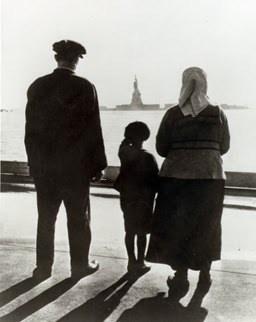
While Gabi did all the work, I also give credit to my country, the United States. On this July 4th
weekend, I realize that Gabi, who is an immigrant, could not have succeeded to the same degree in any
other country. It gives me hope that we are still the land of opportunity.
I have more respect for humble beginnings now, and next year I’m going to tear up the asphalt in
my driveway and replace it with paving stones and turf, and I’m going to hire Gabi to do the demolition
and to cart away the debris.

Published on July 03, 2014 12:58
June 27, 2014
The Beautiful Dilemma

My daughter Lily has hair that goes down past her waist, and each day my wife Robin must comb and braid it. As I watch them, I recognize that their ritual captures the beautiful dilemma of the mother and daughter bond. I am on the outside looking in, and their small ceremony captures everything that has happened, is happening, or will happen between them.
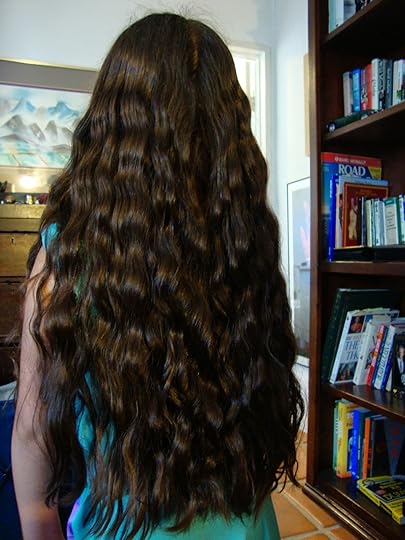
A mother combing and braiding her daughter’s hair captures the bond of love. They are like a moving painting, echoing dozens of paintings of mothers braiding their daughters’ hair throughout history. Robin and Lily whisper, laugh, or say nothing, but they are always touching. Knee against knee, the mother’s hand grazes the daughter’s neck, stroking, soothing, pulling, and tying, the movements bringing them closer together.

The moment captures the drudgery of motherhood. Each day, the mother must do the daughter’s hair. Sometimes twice a day. Sometimes, after swimming, the detangling will take an hour, and there will be yanking and pulling and pain. Robin will tell Lily she should have listened and got out of the pool earlier, and that it’s a long painful process for both of them. There are tears and reprimands. It’s a chore that will always be there, and only her mother can do it well.

The moment captures the helplessness of childhood. When Lily was younger, Lily couldn’t handle her hair at all. She was born with a full head of hair, and she has the atopic gene, which means her hair would grow to her heels if we didn’t cut it sometimes. She can do some detangling and braiding herself now, but her mother still must help her clean, detangle and braid it, and she is always teaching her how to keep it under control. When there is a problem with her hair she must go to her mother and ask for her help. It is a daily reminder that she is still a child.
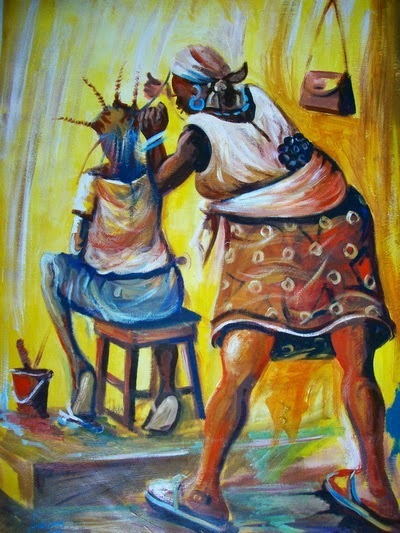
Lily and Robin are at a hotel this week, and a young college student they met at the pool fell in love with Lily and her hair and offered to give her a French braid...but she tugged and pulled it too tight and brought tears to Lily’s eyes. A less painful tug at home will make Lily shout, but for strangers she holds it in -- but then admits to her mother that she still does it best. The moment captures Lily’s growing independence. Sometimes she has a different idea for her hair that day. She may want a side braid, or one big braid in the back, or she might want to keep her hair down. But what Lily wants may not work for her mother -- there may not be time for a complicated new attempt, or leaving her hair unbraided may create a Medusa. It’s always bad if it’s hot day, or there’s P.E. class, or she’s going to a party where her hair will become a play toy for dozens of kids. “No,” the mother says, “the hair can’t be down, otherwise it’ll be a disaster of knots.” I see them negotiate and sometimes battle, and the ritual becomes a testing ground for further conflicts: “But it’s my hair. That’s not what I want.” “Trust me, I know, that’s not the right choice. You’re going to regret it.” Now just swap the word “hair” for “life.” “But it’s my life. That’s not what I want.” “Trust me, I know, that’s not the right choice. You’re going to regret it.” The daughter knows that if she wants independence, she’s going to have to do it herself one day. The mother accepts this, but the mother also knows that the first few times that the daughter attempts to detangle and then braid her ownhair, it will go badly. And it will take hours to fix it. But she must let her try. Lily will fail, and then she will resent that she must go to her mother to solve the problem. Her mother will find the extra time to fix it, because that’s what mothers do. She will also secretly be glad, and will fight to keep from saying “I told you so.” It is their beautiful dilemma, the pearl that holds their world within it. Each day they bond, and then they test the bond.
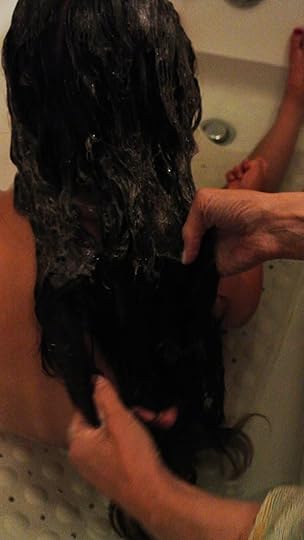
I asked them if I should learn the ritual, but neither of them want me to participate. It belongs to them, and Lily would rather learn it herself now than to have another parent join in. So I watch their ritual from the outside and wish it could last forever, although I know it won’t. Some day Lily will do it all herself. She will come home after dance class and shower and wash and comb her hair, and braid it herself while sitting before a mirror alone in her room, and then the daily ritual will be over. She must, because it is her hair, and it is her life.

The shrine, in the sitting room, with it’s two small chairs and a desk full of hair products will disappear. She may still sometimes ask her mother to do her hair, or her mother will ask if she can do it for a special occasion, but it won’t be out of need any longer. It will be out of loving memory.

Mono No Aware. That’s the Japanese phrase for the transitory beauty of life. It’s the wonderful awareness that life is happening right in front of you, yet as it happens you know it’s also slipping away. It’s a joy and a hurt at the same time, yet you know you’re alive. That’s what I feel that as I watch them, my own moving Vermeer painting.

Published on June 27, 2014 12:49
June 20, 2014
Water Always Wins

I got great advice when I was first learning how to surf, at age ten. A Hawaiian local on a long board gave me a few pointers on my pop-up, and then finished his lesson with a short phrase that has kept me alive and safe over many decades:
Never forget -- water always wins.
It’s summer and my daughter Lily now wants to dive into the ocean and swim, snorkel, boogie board and surf, and she wants me to teach her. I plan to pass on the same phrase to her, and hopefully it will keep her safe and alive through dozens of summers, like it did for me.
Water always wins.
This simple truth applies to the ocean, to lakes, to streams, to creeks, and to L.A. streets flooded by storms. Water can be deceiving because it yields and then follows the path of least resistance, but that gentle power also carved the Grand Canyon. If you think you can beat water, or if you don’t recognize the power hiding under its placid surface, you’ll regret it.
To be safe you should stay out of trouble in the first place, but if you get caught in a bad situation you should use focus on another phrase:
Relax and go with the flow.
Let’s break it down. Michael Phelps, swimming top speed, moves five miles an hour, for less than two minutes. While he’s breaking a world record in the 200 meter freestyle, you can walk briskly on the pool deck and keep up with him. A regular lap swimmer can swim two miles an hour, with lots of rest between laps.
Deep water moving just two miles an hour looks like it’s standing still. When you’re in the ocean, you may be in a one mile an hour current, and not even realize it, and then when you fight against it you end up exhausting yourself. Even the best swimmer in the world will lose that fight in twenty minutes or less.
I’ve seen it happen. Someone swims out, plays in the waves, and then drifts too far down the beach. He panics and sprints for the beach -- and doesn’t make it. He’s too exhausted to beat the constant current and he gets into trouble.

The same applies to a mountain stream. You step into the water and you feel an invigorating and brisk current against your ankles. You decide you can cross it. After all, that stream is only moving a few miles per hour. But in the middle you discover the water moves slightly faster, and the faster current has made the creek bed slightly deeper. The water is now at your calves. Your backpack seems heavy, and the cold water has stolen feeling from your feet. You slip and fall -- and suddenly you are moving in a cold current that’s faster than two miles an hour.
I’ve seen it happen. I saw the lead backpacker in a group try to get across the gentle but steady current, and then get swept off his feet and tossed downstream.
Water always wins…
Then there’s the temperature. Our normal body temperature is 98.6 degrees, but even warm tropical water is around 75-80 degrees and saps your energy if you’re in a long time. Ocean water off California is even colder, and you can feel it stealing your calories. Add in a slight breeze while you’re sitting on your board, and that chill happens even faster, even while wearing a wet suit. The longer you stay in, the less energy your muscles have in reserve, and the calorie drain will cloud your brain.
When I’m out surfing or swimming for a long time, I can feel my muscles tighten and my jaw feels thick. I think and speak at a slightly slower speed -- a difference no would even notice -- but that’s my signal to get out. My brain is moving slower and I know I’m one wave away from a bad outcome.
Don’t get me wrong. The water is fun and only turns dangerous if you underestimate its strength, or you don’t read her messages. And the messages are everywhere -- water has been winning battles on Planet Earth since time began and her victories are carved into the mountains, canyons, lakes, beaches coastlines.
You just have pay attention, and ask around!

Don’t be the first one in. Sit down and watch.A great beach has lots of sand because a current dumped it there over millions of years. Watch where the water flows. Within a couple of minutes you can tell where it’s safe to go in and come out, and what areas to avoid.
If there are rocks at one end and curving sand at the other, it happened for a reason. There’s usually a spot where the water likes to come in, and a spot where it likes to retreat and rush out. Look for where water likes to win, and don’t fight a losing battle by going against it.
Look for tell-tale lines in the water, where it changes color. That line could be a wind line -- inside the line you are sheltered from the wind, but if you go past it you’ll feel the breeze coming down off the mountain or from around the point. It’s hard to fight that wind, especially on a surfboard, paddle board or ocean kayak. Go too far out and you might not get back. That line could also mark a temperature difference, which means there’s a current.
The same goes for a mountain lake. Don’t dive off that rock into that deep dark water. Watch other people do it first before risking breaking your neck.
Best of all -- ask someone who knows the place!
Don’t turn your back on a wave, or think you can brace yourself against it.An ocean wave is a enough water to fill a house. You can maybe outrun it. You can maybe dive under it. You can maybe dive over it and let it tumble you up on the beach. But you can’t stand still against it, and if you turn your back, it will knock you down.
And girls forget your bikini top! I can remember a dozen times when a girl turned her back or braced against the wave and it knocked her down and the force undid her top or took it right off. To avoid embarrassment the girl frantically tried to stay submerged in the impact zone while trying to re-tie or even find her top -- while getting hit again and again. Rescue was required.
When in Doubt, Get OutBe aware of that tiny twinge of cold, that slight slurring of words, and that weakness in your muscles, that slight current that pushes you ever down the beach. That’s water winning. Let water win and get out.
Relax, and Go with the FlowWhat do you do when the wave knocks you down and rips off your bikini top? Or you get held underwater by a wave that grinds you into the sand?
Don’t panic. Go limp and put your arms up and try to cover your head. No amount of fighting will make a difference. Grab a breath and try to relax. Get out if you can, or go into deeper water and gather your senses and look for a way out. Crawl out on your hands and knees, that way the water can’t knock you down again. And wave and yell for help. Don’t be proud.
What your caught in that rip current that’s pulling you out to sea? Or you’re too far out and you’re drifting down the coast?
Again, don’t panic. You breathe, float and see where it takes you, and wait for the water to bring you to an eddying spot where you can get out. It may be a mile down the coast, but you will have gone with the flow instead of fighting a losing battle. But again, don’t be afraid to wave and scream for help.
On Zuma Beach in Malibu the waves pound into the shore and the rip currents tug you down the beach. The lifeguards may rush in and rescue you, but if you’re calm out there, they may wave and point for you to drift further down the beach to a spot where they know it’s safe for you to come ashore. They will keep pace with you, and then will help you get out where it’s safest.
If you’re in a mountain stream and you get knocked down, you don’t fight. You turn over, get your feet up and point your toes downstream and you flow with the current, waiting for it to push you into some spot where you can get out.
Water always wins...so relax and go with the flow.
Published on June 20, 2014 09:30



